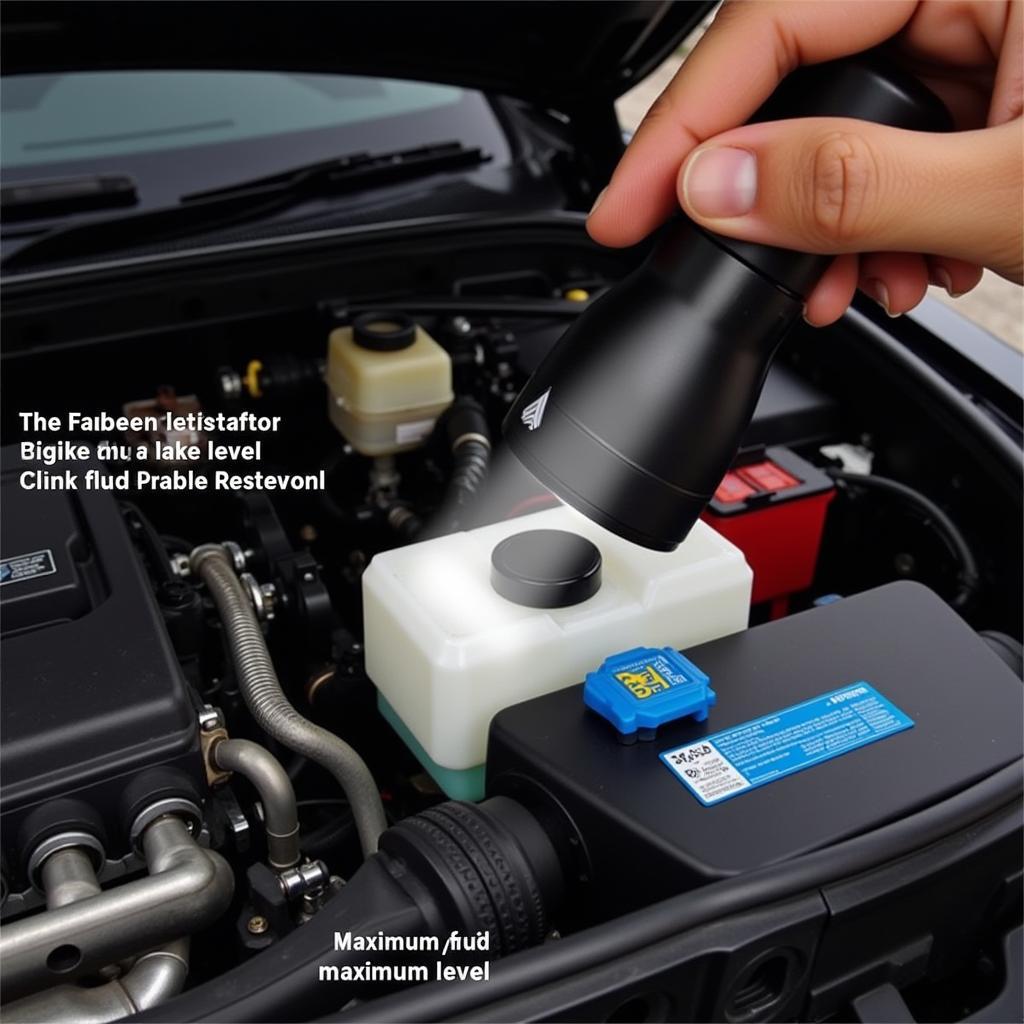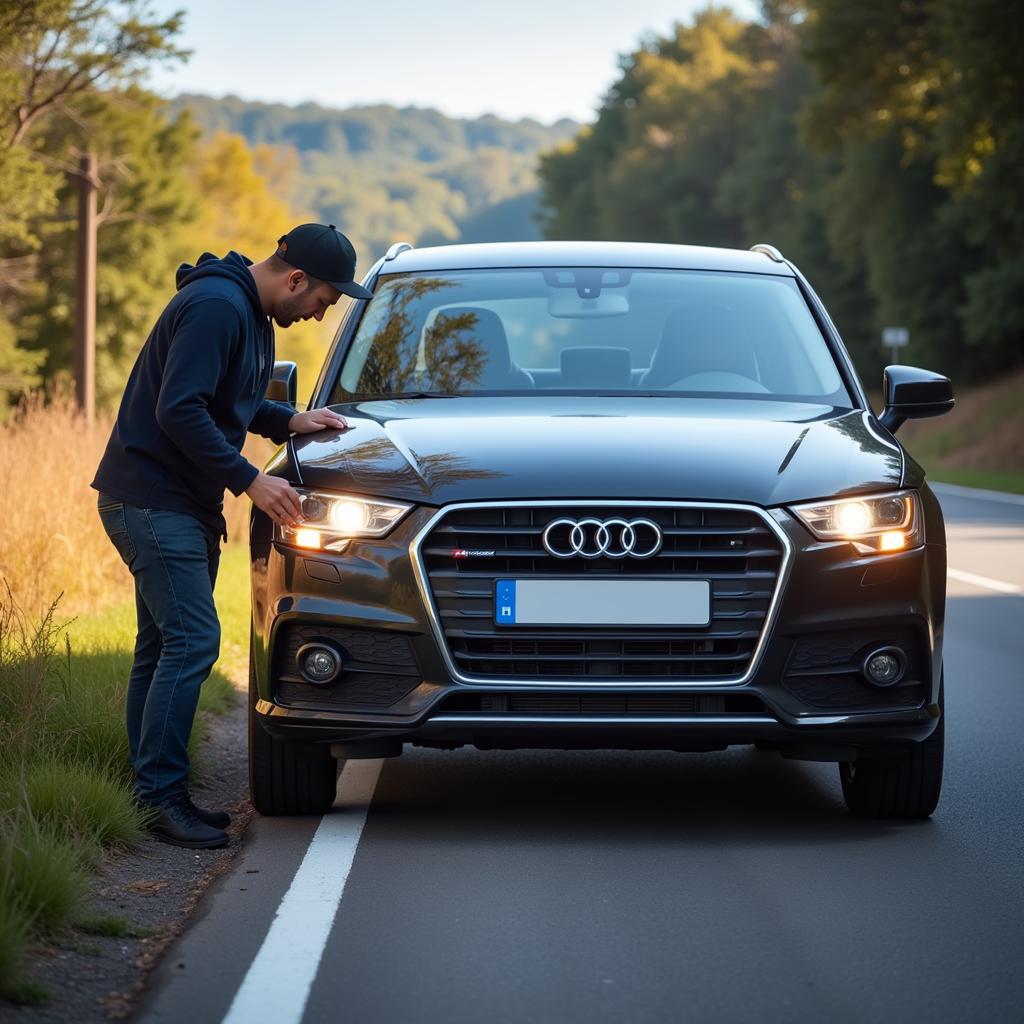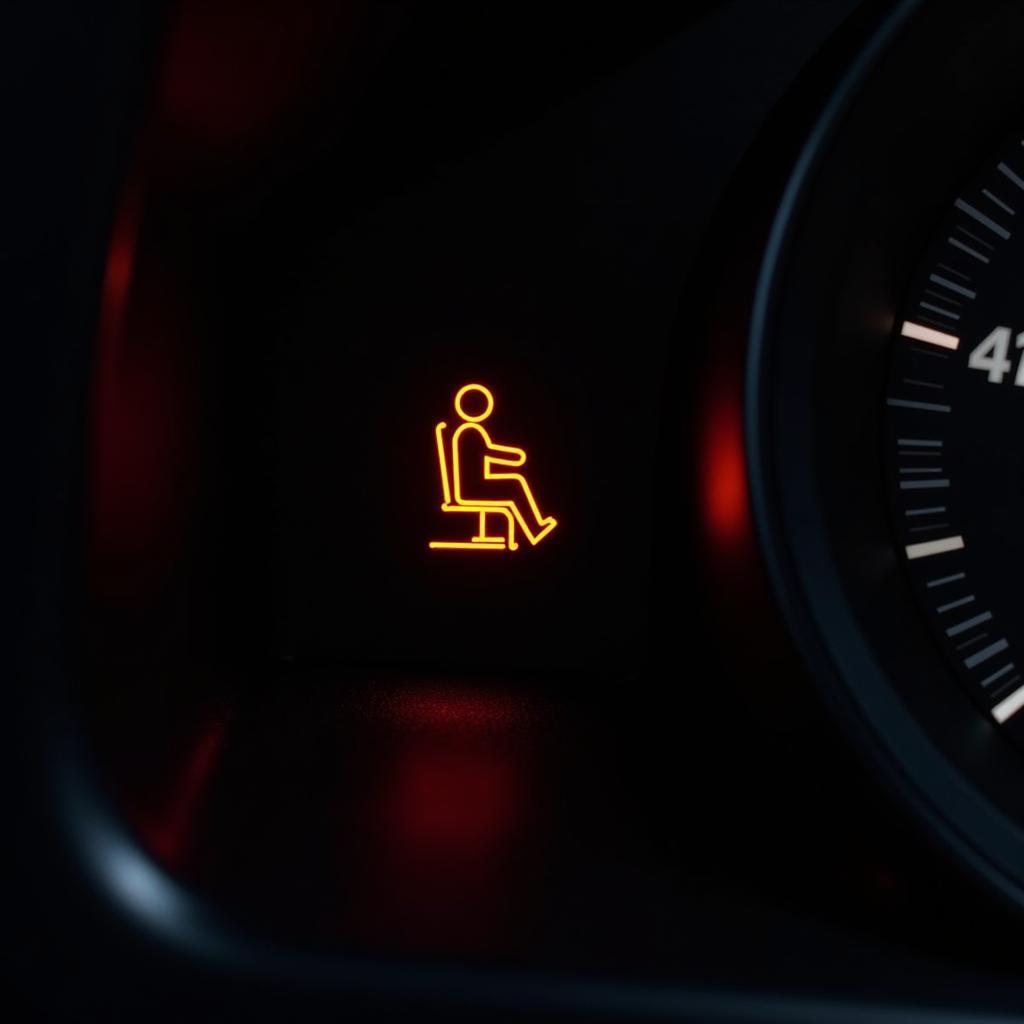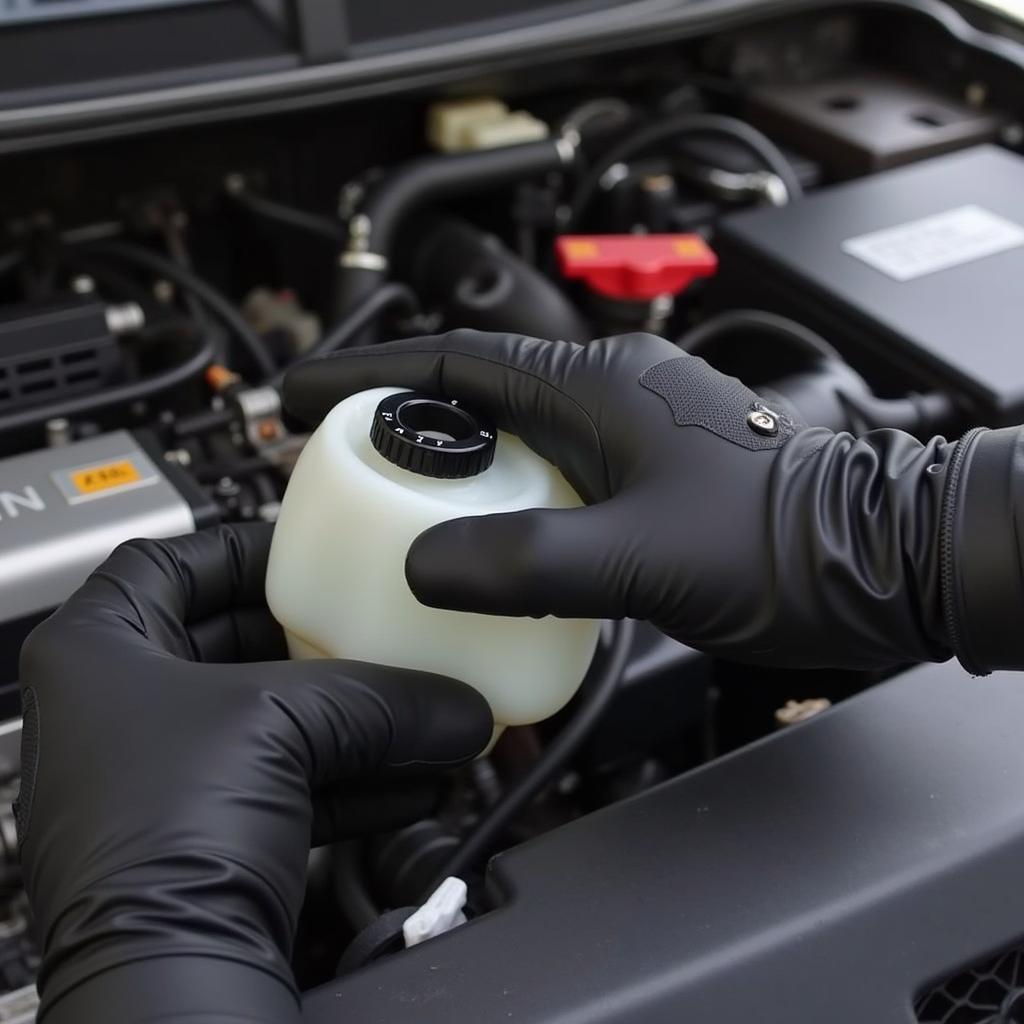The dreaded brake warning light illuminating on your dashboard while driving can be a nerve-wracking experience. Understanding why your brake warning light is on while driving is crucial for maintaining safety and preventing further damage to your vehicle. This guide will provide you with expert advice on diagnosing and resolving the issue.
The brake warning light serves as your vehicle’s primary indicator of potential brake system problems. While it can sometimes indicate a minor issue, it should never be ignored. See brake warning light while driving for more general information on this topic. Ignoring the warning light could lead to costly repairs or even a dangerous driving situation.
Understanding Your Brake Warning Light
Several reasons can trigger the brake warning light, ranging from simple fixes to more complex problems. Common culprits include low brake fluid, a malfunctioning parking brake, worn brake pads, or issues with the ABS (Anti-lock Braking System).
Low Brake Fluid: A Common Culprit
One of the most common reasons for the brake warning light to illuminate is low brake fluid. This can happen due to leaks in the brake lines or simply due to wear and tear over time. Checking the brake fluid level is a quick and easy task. If the fluid is low, topping it off might solve the problem. However, if the fluid level drops quickly again, it indicates a leak that requires immediate professional attention. Check our guide on parking brake warning light comes on while driving as this could be related.
 Checking low brake fluid level
Checking low brake fluid level
Malfunctioning Parking Brake
Sometimes, the brake warning light can be triggered by a faulty parking brake switch or if the parking brake isn’t fully disengaged. Make sure the parking brake is released entirely. If the light persists, the switch might be malfunctioning and need replacing. For specific issues with older models, you can explore resources like chrysler sebring 2010 brake warning light coming on while driving.
Worn Brake Pads
Brake pads are designed to wear down over time. When they become too thin, they can trigger the brake warning light. Worn brake pads will also reduce braking efficiency, increasing stopping distances and potentially leading to dangerous situations. Replacing brake pads is a standard maintenance procedure and should be done regularly according to your vehicle’s manufacturer recommendations.
ABS Issues
The ABS (Anti-lock Braking System) is a crucial safety feature that prevents wheel lockup during hard braking. A malfunctioning ABS system can also trigger the brake warning light. While the brakes might still function, the ABS might not be operational, potentially leading to loss of control during emergency braking situations. Diagnosing ABS problems requires specialized tools and expertise, so it’s best to consult a qualified technician.
What to Do When Your Brake Warning Light Comes On
If your brake warning light comes on while driving, you should pull over safely as soon as possible and assess the situation. For some helpful tips, see brake warning light comes on while driving you should. Check your brake fluid level, ensure the parking brake is fully disengaged, and listen for any unusual noises from the brakes. If you’re unsure about the cause, it’s best to have the vehicle towed to a qualified mechanic for further diagnosis and repair.
 Car pulled over for a brake check
Car pulled over for a brake check
“Ignoring a brake warning light is like ignoring a ticking time bomb. It’s a recipe for disaster.” – John Davis, Automotive Engineer
Conclusion
Addressing a brake warning light promptly is essential for safe driving. While some causes might be simple to fix, others require professional expertise. Don’t ignore this crucial warning sign – addressing the issue promptly can save you money, time, and potentially prevent a dangerous accident. For further information on this issue you can read our article on brake warning light appears while driving. Remember, your safety is paramount.
“Regular brake maintenance is the key to preventing unexpected issues and ensuring optimal performance.” – Maria Sanchez, Certified Mechanic
FAQ
-
What does the brake warning light look like? It’s typically a circular symbol with an exclamation point inside parentheses, or the word “BRAKE.”
-
Can I drive with the brake warning light on? It’s highly discouraged. Pull over safely and assess the situation.
-
How much does it cost to fix a brake warning light issue? The cost varies depending on the cause and can range from a simple fluid top-off to more expensive repairs like brake pad or caliper replacement.
-
How often should I check my brake fluid? It’s recommended to check your brake fluid level at least once a month.
-
Can worn tires trigger the brake warning light? Not directly, but worn tires can affect braking performance and indirectly contribute to brake system issues.
-
What is the difference between the brake warning light and the ABS light? The brake warning light indicates a general brake system issue, while the ABS light specifically points to a problem with the Anti-lock Braking System.
-
Can I top off my brake fluid myself? Yes, but ensure you use the correct type of brake fluid recommended by your vehicle’s manufacturer.


